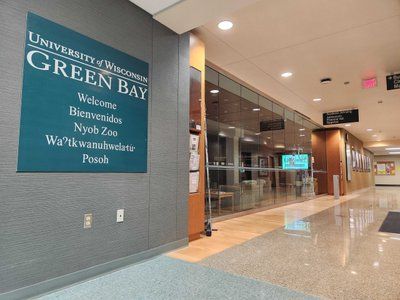By Tom Still
For the first time since records have been kept, the University of Wisconsin-Madison has fallen out of the nation’s top five universities in terms of dollars spent on research and development.
The fall wasn’t far — from fourth to sixth in 2015, with total spending of $1.17 billion — but the slippage exposed some cracks in the foundation that has kept UW-Madison among the nation’s elite R&D universities for more than 40 years. Read the full Journal Sentinel article here.
First the good news: UW-Madison still ranked sixth among the nearly 900 colleges and universities tracked by the National Science Foundation, which is no small feat. The perennial leader is Johns Hopkins University in Baltimore, Md., primarily because of its defense-related work, and No. 2 Michigan at $1.37 billion is within striking range.
It’s still far and away the biggest research university in Wisconsin, as well. Second on the list is the Medical College of Wisconsin, which ranked 104th in 2015 at $199.3 million — down about $10 million from its high in 2012. Next is UW-Milwaukee at $63.4 million, 171st on the NSF list, while Marquette University ranked 246th at $24.8 million. Other state colleges and universities also conduct research work but generally rank in the middle of the national pack.
As slight as the drop in rankings may seem, however, it’s troubling for several reasons:
- Budgets for the UW System have been cut in five of the last six state government spending cycles, and the cumulative effect is beginning to show. State tax dollars aren’t counted in the NSF’s R&D grant totals, which are primarily federal, industry and private foundation sources. They do matter, however, in terms of supporting basic research on all UW System campuses. Without support for basic research, the UW System is constrained in terms of attracting dollars for applied research — the kind that turns ideas into products and services. It also makes it harder to attract and retain quality faculty, in particular younger faculty who are more likely to be passionate about long-term research.
- The UW System is now paying the price for years of failing to pursue defense, Homeland Security and classified research dollars. Other universities have no qualms about going after such funds, which usually fall into math, physics, engineering and other science fields. Increasingly, research that once was unclassified is now classified, meaning it’s secret or top secret. Despite some rule changes that allow the UW System to go after such research, it hasn’t been aggressive enough.
- The effect of academic R&D spending is not confined to campuses. It has a trickle-through effect across the Wisconsin economy. A recent study by the Institute for Research on Innovation and Science at the University of Michigan concluded that Wisconsin is one of the nation’s leading states in terms of the secondary effects of academic R&D, with spending on vendors and subcontractors in all 72 Wisconsin counties. That pool of expertise constitutes an industry that attracts dollars from other research universities.
“One of the things that makes Wisconsin attractive to researchers elsewhere is its infrastructure of research-oriented firms in the private sector,” said Jason Owen-Smith, executive director of the Michigan institute.
Research for the sake of research is necessary. It’s what drives innovation. Also needed is for more of that research to result in products, services and companies, which hasn’t always happened in Wisconsin.
A report by NorthStar Economics showed nearly 25,000 Wisconsin jobs are supported through 362 startup firms tied to research rooted on the UW-Madison campus. Those companies contribute about $2.3 billion per year to the Wisconsin economy.
There’s room for improvement, however. UW-Madison reported forming six startup companies in 2015, according to the nonprofit Association of University Technology Managers. There were 51 universities that reported forming more than six startups in the same year.
That association’s study is imprecise because some university startups don’t use the Wisconsin Alumni Research Foundation, which is the UW-Madison’s independent patent and licensing arm. It’s also true that recent efforts to boost campus entrepreneurism have yet to hit their stride. Still, it’s worth noting that being sixth in R&D spending doesn’t automatically translate to company creation.
As one Wisconsin early stage investor told me this past week, “I would much rather see us 10th in R&D spending and top 10 in company creation than sixth and 52nd.”
With a little more attention from policymakers and UW officials alike, perhaps Wisconsin can win on both counts.





